| Ceratocilia | |
|---|---|
 | |
| Ceratocilia sixolalis | |
| Scientific classification | |
| Kingdom: | Animalia |
| Phylum: | Arthropoda |
| Class: | Insecta |
| Order: | Lepidoptera |
| Family: | Crambidae |
| Tribe: | Asciodini |
| Genus: | Ceratocilia Amsel, 1956 [1] |
| Ceratocilia | |
|---|---|
 | |
| Ceratocilia sixolalis | |
| Scientific classification | |
| Kingdom: | Animalia |
| Phylum: | Arthropoda |
| Class: | Insecta |
| Order: | Lepidoptera |
| Family: | Crambidae |
| Tribe: | Asciodini |
| Genus: | Ceratocilia Amsel, 1956 [1] |

Omiodes is a moth genus in the family Crambidae. Several species are endemic to Hawaii.
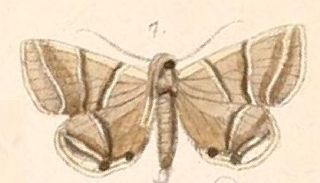
Rejectaria is a genus of litter moths of the family Erebidae. The genus was erected by Achille Guenée in 1854.

Aulacodes is a genus of moths of the family Crambidae. The genus was first described by Achille Guenée in 1854.
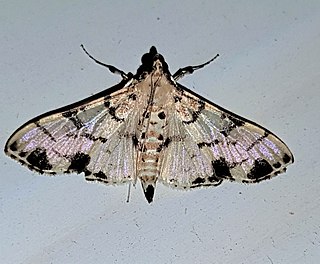
Azochis is a genus of moths of the family Crambidae. The genus was erected by Francis Walker in 1859.
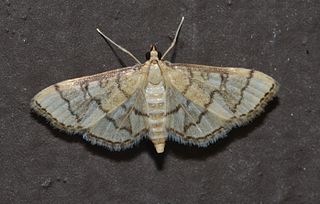
Blepharomastix is a genus of moths of the family Crambidae described by Julius Lederer in 1863.
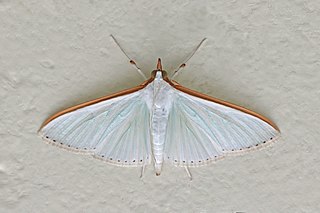
Diaphania is a genus of moths of the family Crambidae.

Dichocrocis is a genus of moths of the family Crambidae. The genus was described by Julius Lederer in 1863.

Glyphodes is a genus of moths of the family Crambidae described by Achille Guenée in 1854.
Lamprosema is a genus of moths of the family Crambidae described by Jacob Hübner in 1823.

Neurophyseta is a genus of moths of the family Crambidae.
Lygropia is a genus of snout moths in the subfamily Spilomelinae of the family Crambidae. It currently comprises 66 species, which are mostly found in the tropical and subtropical regions of the Americas, Africa and Asia, but not in Australia.
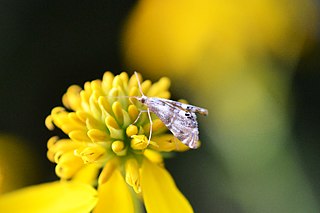
Petrophila is a genus of moths of the family Crambidae. The genus was described by Lansdown Guilding in 1830.

Phostria is a genus of moths of the family Crambidae.

Pilocrocis is a genus of moths of the family Crambidae. The genus was first erected by Julius Lederer in 1863.

Syllepte is a genus of moths of the family Crambidae.
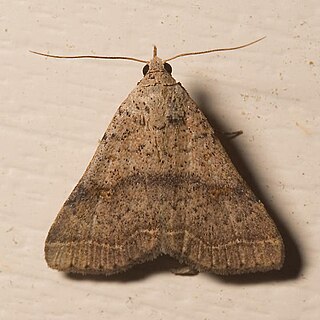
Bleptina is a genus of litter moths of the family Erebidae. It was erected by Achille Guenée in 1854.

Desmia is a genus of moths of the family Crambidae. The genus was erected by John O. Westwood in 1832.
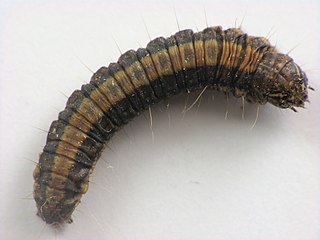
The Epipaschiinae are a subfamily of snout moths. More than 720 species are known today, which are found mainly in the tropics and subtropics. Some occur in temperate regions, but the subfamily is apparently completely absent from Europe, at least as native species. A few Epipaschiinae are crop pests that may occasionally become economically significant.